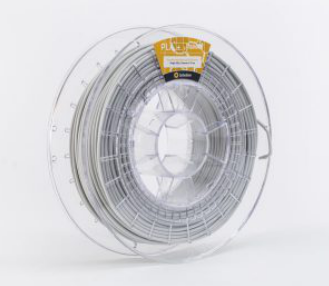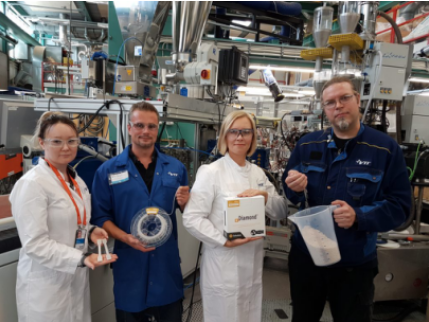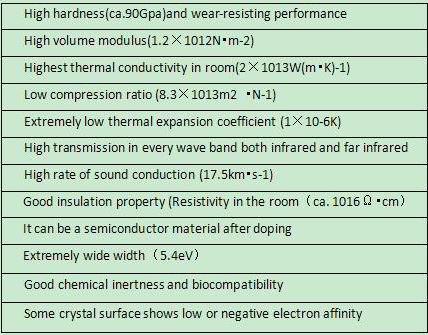Company tel:+86-379-63184520
Contact number:+86-15937921751
Postcode:471000
Email:info@yuxindiamond.com
Address:3-1-508 Luoyang National University Science Park, No. 2 Penglai Road, Jianxi District, Luoyang, China 471000
Nanodiamond-Enhanced 3D Printer Filament Now on the Market

Earlier this year, a partnership was announced between Tiamet 3D and Carbodeon, which would work together to develop the first nanodiamond-enhanced 3D printing filament. Known as uDiamond, the filament was patented by Carbodeon and is now available on the market. The nanodiamond-based PLA enables faster 3D printing and improves the mechanical durability of the prints. The nanodiamonds themselves have the ability to shape the structure and properties of the 3D printing material, and they act like lubricants.
In addition, the nanodiamonds improve the conductivity of the PLA. Carbodeon’s testing showed that print speed could be increased up to 500 mm/s, with the prints showing improved mechanical properties. The filament is easy to print with consumer-grade 3D printers, as well.
“This is the first product of a family that will be sold as a finished 3D filament and in a granular format, as well,” said Carbodeon CEO Vesa Myllymäki. “VTT has been a long-term, reliable partner in this development, and has reacted to our needs quickly.”

The Technical Research Centre of Finland (VTT) worked with Carbodeon to create methods for evenly dispersing the nanodiamonds in the filament to create a PLA composite optimized for 3D printing and produced at an industrial scale. VTT has also tested the material and prints made from it.
“Using our chemical pilot devices, we at VTT produced the nanodispersed material required for the melt processing, and thus supported the creation of a new product,” said Jarmo Ropponen, Research Team Leader at VTT’s chemical pilots.
Nanodiamonds are diamond particles produced by explosions, and they are among the most thermally conductive and hardest materials known. There are some health concerns about nanosized particles if inhaled, with studies showing that they can cause oxidative stress to the heart, lungs and brain. However, good ventilation is suggested as a way to mitigate the risk, just as it is suggested for any type of 3D printing material. Carbodeon’s nanodiamonds have been shown to be non-toxic and suitable for a range of applications according to EPA and REACH assessments.
“The melt processing of plastics became easier and the mechanical characteristics were improved with the introduction of nanodiamonds,” said Satu Pasanen, Research Scientist at VTT in charge of the plastic piloting in the development. “Based on the preliminary tests, the modulus of the 3D-printed test pieces was improved at best by more than 200% compared to the PLA-based filament already on the market. VTT´s Polymer Pilot produced the first 600 kg material batch, which Carbodeon had refined into a commercial product.”
Diamond, as one of the most special materials in natural world, is featured with the highest hardness, low friction coefficient, high elasticity modulus, high thermal conductivity, high insulation class, wide energy gap, great sound propagation rate and favorable chemical stability, which are presented in below Table. In spite of such unique features, the natural diamond has always been existed in the form of gem, with its variability and rareness sharply limiting its application. Luoyang Yuxin Diamond Co., Ltd‘s CVD Diamond film, on the other hand, integrates such physical and chemical properties, with lower cost than natural diamond and applicable to be made into various shapes, thus enjoying extensive application prospect in electronic industry, optical field and mechanical industry.








